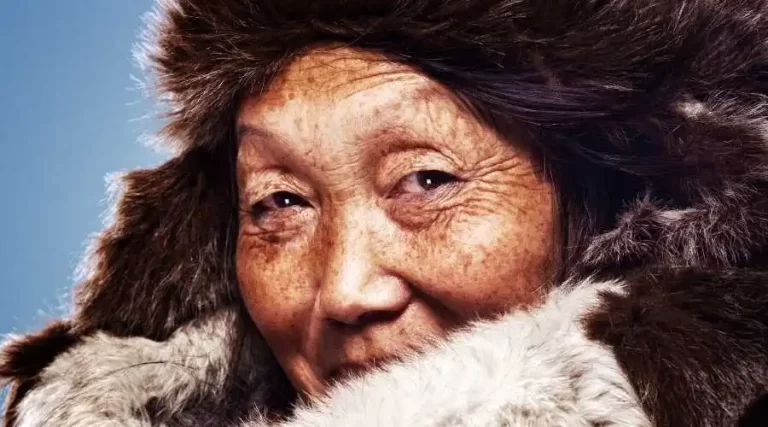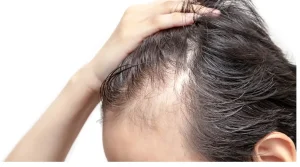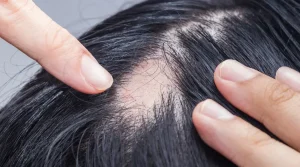When it comes to the reasons for baldness, we’ve heard so many stories and fallacies that we don’t know where to begin debunking them. The public can blame anything. It is impossible to cover all the misconceptions about hair loss, so we’ll focus on the four most common ones.
Clean Means Hairy
According to this hypothesis, excess oil, air pollutants, sebum, and dead cells build up around the hair shaft, suffocate the hair, and prevent it from growing back. The following issue arises: “How can there still be hair on the sides and back of the head?” Experts in trichology may explain that these hairs develop downward to shield the hair from the buildup of the poisonous substance that would otherwise reach the hair shaft and follicle. However, this is not the case.
Men who are clean but still have full heads of hair, as well as those who are filthy but still have full heads of hair, contradict the assumption that a dirty scalp is the cause of hair loss. Hair loss in both men and women would be accelerated in areas where personal hygiene opportunities and resources are limited if this idea is accurate. Of course, this is entirely false. Isn’t the entire scalp bald if it’s covered in dirt?
The best way to improve the appearance of your hair is to practice appropriate scalp and hair maintenance, including regular shampooing. Although this will not stop hair loss or cause it to regrow, it is a viable option.
Faulty Freeway System
Some barber and beauty schools still teach the “faulty motorway system” idea when it comes to hair loss, which is one of the most common myths concerning hair loss.
This notion is based on the observation that the upper part of the scalp receives less blood flow than the bottom part. Toxins can build up in the hair follicles because of this putative “flaw” in the circulatory system—the flawed highway system.
As a result, the hair begins to starve and fall out. Even if you don’t have to wear headgear for your job, wearing a hat or other headgear can exacerbate an already depleted flow of blood. What happened? Loss of hair.
The left and right carotid arteries supply the scalp with blood, extending upward from the heart, around the ears, and up to the very top of the head. As a result, if the circulatory system determined baldness, then all men and women would have a central line of baldness that begins at the crown of the head, extends to the frontal hairline, and widens toward the ears over time. This is not the case.
Instead, thinning the hair above the temples is the most common early symptom of common baldness in most males. Temporal recessions, or the ‘V’ recessions on the hairline sides, are the result of this. In contrast to the top of the head, this area receives more blood flow, yet baldness occurs here.
The circulatory system and hair loss are not linked in any way, shape, or form. Between 35 and 55, you’re more likely to notice unwanted hair growth on your eyebrows, ears, and nose. How can the circulatory system possibly be to blame for this occurrence? Are all men capable of experiencing increased blood flow to their ears and nose in their middle years without apparent cause? Although it’s feasible, it’s not likely.
Dr. Norman Orentreich’s experiment in 1955 is the final nail in the coffin of the hypothesis of a diminished blood supply. Using intact follicles from the back of a patient’s head and bald grafts from the top of the same patient’s head, he transplanted a 4-millimeter hair graft and a 4-millimeter bald graft.
As a final step, Dr. Orentreich swapped the hair-bearing graft for the one that had been removed and vice versa. The “hairy” transplant thrived in the enormous area of baldness, whereas the bald graft stayed naked in the sea of hair surrounding it, as Dr. Orentreich observed over several months. If blood supply impacts hair loss or growth, the graft on the top of the head should have shed hair. The bald graft on the back of the head should have grown hair.
Inuit Hair Rituals
If you’re looking for the best example of a culture that rejects baldness mythology, you might want to go to the Inuit people of the Arctic.
Male Inuits don’t wash their hair very often and are almost always seen wearing hats.
To give their hair a shiny finish, they usually use whale and fish oils, revered in their society for their luster. They also have a restricted diet that lacks the necessary diversity of foods to qualify as a balanced diet.
Because of this, the average life expectancy of the Inuit civilization is only 60 years for males.
Physical and Mental Trauma
It’s a prevalent assumption that hair loss is caused by physical damage and mental stress, such as anxiety and worry. We hear from men all the time about how they didn’t notice they were growing bald until their daughters started dating, until they were under financial stress, or went through a divorce.
Another group of people claims that their hair loss began after a physical injury to the head, such as a car accident. Is this a valid argument? No.
Stress can hasten hair loss, but it is not the primary cause, especially in women.
It is more likely that psychologically, what these people believe has caused their hair loss is a delayed reaction to something that has already started. Before the accident or when their daughter started dating, their hair began to thin. Only after experiencing trauma or stress did the males notice their hair receding, a common psychological reaction.
You Are What You Eat!
A “vitamin supplement” notion says men with hair loss have hair follicles that are dying because they aren’t getting enough nutrients in their diets. According to this belief, the best way to prevent baldness is to take vitamin and mineral supplements like zinc, cystine, and the B-complex vitamin biotin.
Laboratory study has indicated that hair (which is formed mainly of protein) needs to be fed particular nutrients to grow, according to a hair studio trichologist and deceptive ads. It is commonly argued that the typical American male’s diet is deficient in these essential nutrients, and this is true. As a result, he has a receding hairline.
In the absence of adequate nutrients, does my hair fall out?
Yes, but the absence of nourishment must be so severe that the individual is on the verge of passing away. Short-term low levels of magnesium or zinc, sometimes encountered in healthy Americans, are not the same as acute clinical famine.
In addition, clinical fasting does not and cannot cause hair loss in the typical male pattern baldness patterns. Instead, it results in widespread baldness that affects the entire scalp. Hair loss is not the only sign of clinical malnutrition, although it is often the last.
Diseases or abnormal conditions of the internal organs, teeth and gums, skin, and nails are examples of other symptoms. It is safe to infer that a nutritional shortage is not the cause of your hair loss if you have diffuse unpatterned hair loss but no other indicators of acute clinical hunger.
There are numerous myths about Inuit men’s baldness, including poor circulation caused by the cold, reduced blood supply from wearing hats, sebum-clogged hair, and an unhealthy diet deficient in vitamins.
According to the myths, all of these things should result in an unusually high rate of baldness. In contrast to the ordinary Caucasian guy, the Inuit, like other people of similar racial traits, have a substantially lower risk of going bald.





